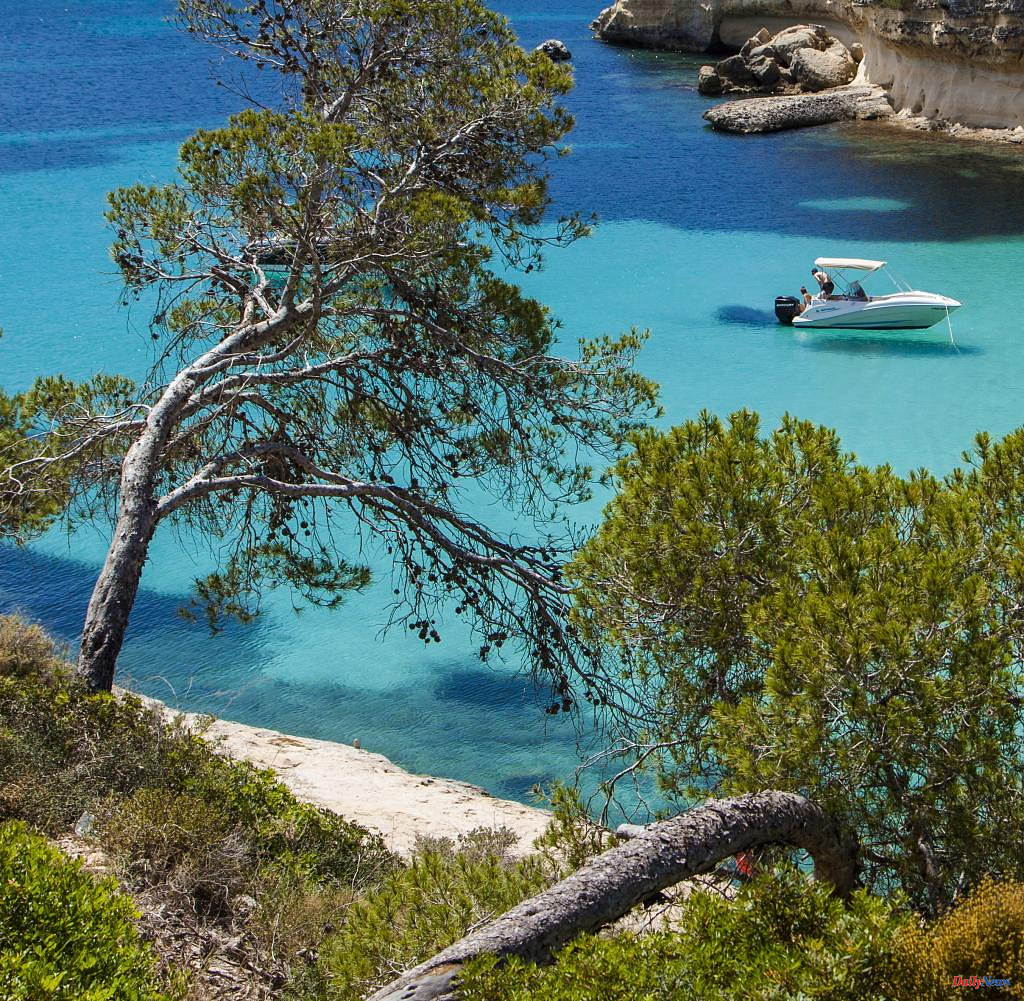Mallorca offers more. Far away from Playa de Palma, the lesser-known but all the more beautiful beaches and bays of the largest Balearic island await. Along the 550 kilometers of coastline there are a total of 222 playas (beaches) and calas (bays). Here we present eight of the most beautiful ones.
Three small beach coves are hidden south of Magaluf behind Portals Vells in the dense pine forest and near the western tip of the large bay of Palma. Despite its proximity to the major resorts, the first, Playa El Mago, is rarely overcrowded. One of its great advantages: A large pine forest stretches along the entire beach, so that you can always find a spot in the shade.
Playa El Mago was Mallorca's first official nudist beach. But in reality, everyone can bathe as they wish. Continue on foot or over bumpy sand tracks to Playa del Rei or the largest, Sa Caleta.
The longest natural beach in Mallorca is considered one of the most beautiful in Europe and, thanks to keen conservationists, is still practically undeveloped. The 2.5 km long, fine white sand with the turquoise water in front conveys a Caribbean flair. The flat entrance is ideal even for the little ones, and it's easy to walk along the dunes.
If you want a little refreshment, it is best to make yourself comfortable at a section with a restaurant. And anyone who likes snorkeling is also in the right place here - the water is usually wonderfully clear. However, the parking lots fill up quickly; So it's worth getting up early.
It is the Instagram hit among the bathing spots on the island and for many it is Mallorca's most beautiful bay. Especially in the morning, when the sun shines over the round, washed black stones onto the sandy bay between sheer cliffs, which is no more than 40 meters wide, this beach and the turquoise, crystal-clear water can compete with any dream beach in the Seychelles.
Depending on the current and waves, sometimes there is no sand to be seen at all. The water is reached via a recently reopened parking lot and 20 meters of steps. Everyone should bring their own picnic - there is no restaurant there.
Three densely forested promontories stretch into the sea; in their corners two bright sandy bays sunbathe. Aleppo pines are reflected in the water: the twin bays of Cala Mondragó and Cala S'Amarador offer peace and relaxation in a nature reserve in the south-east of the island.
The road from Santanyi, lined with quarry stone walls, ends after five kilometers at the parking lot. The last stretch is hiked through a fragrant pine forest. In the first bay, Cala Mondragó, most people spread out their towels and enjoy the sweet beach life. Although the walk to the charming Cala S'Amarador takes barely ten minutes, it is far less busy there. Rangers make sure that nobody walks into the closed dune areas.
This is one of the local beaches of Cala Ratjada in the north of the island - with a breathtaking panorama: The bay lies directly in front of a nature reserve and is surrounded by dunes, mountains and forests. In the south there are beach bars and loungers, a rental station offers pedal boats, water skis and surfboards.
In the north you can always find a quiet spot - mostly even with pine shade. To the left of the 500 meter long beach, a headland leads into the sea, the tip of which is ideal for hiking. A tip is the hidden Cala Moltó, only 150 meters away. Cala Agulla is connected to Cala Mesquida by a 3.5 kilometer hiking trail.
The bay is located in an impressive dune landscape on the north-east coast of the island and is only developed on one side with a small urbanization including restaurants. The rest is and will remain a conservation area as it is home to numerous bird species.
From the free car park it is only a few minutes' walk to the beach. The shallow, turquoise-blue water invites you not only to swim but also to do water sports. The beach, which is 400 meters wide and up to 130 meters deep, has a bar, toilets, parasol and lounger rental. The beach is only partially suitable for small children because of the sea currents.
The central section of the many kilometers long sandy beach between Ca'n Picafort and Puerto Alcúdia is clearly the most beautiful with its dunes and forests. It's only lonely there in the low season - but where else is the sand so fine and the view of the Bay of Alcúdia so magnificent?
And on top of that, Playa de Muro is family-friendly with its shallow water. However, you have to walk into the sea for quite a while to reach the swimming depth. This playa is perfect for beach runners: from the lively Sector 1 near Alcúdia with the most famous wooden pier on the island via the chic Sector 2 and the undeveloped dune sector 3 to Ca'n Picafort (Sector 4) it is almost six kilometers.
The spectacular bay in the very north of the island lies on the edge of the pine forests and shows a wild landscape panorama with an overwhelming view of the Tramuntana mountains. Pines and holm oaks provide shade; Crystal-clear water and a long, gently sloping natural beach make families happy.
Because the beach is long but only about ten meters wide, you have to be there early to get a nice place to lie. At the jetty, excursion boats invite you to take a tour, for example to the Isla de Formentor. At the end of the sandy beach is the famous Hotel Formentor, where Winston Churchill and John Wayne have stayed.
The semi-official Internet portal platgesdebalears.com (Beaches of the Balearic Islands) lists exactly 222 beaches and describes in detail their condition, how to get there, whether they are monitored and, if necessary, certified, for example with the Blue Flag. For many beaches even the current water temperature, wind direction and wave height are listed. And - particularly interesting in the high season - the occupancy (whether you can still find space for your towel).
If you are planning a holiday now, you should not hesitate too long. After two years of the corona pandemic with sometimes severe travel restrictions, demand is high. In Spain and Greece in particular, the prices for an overnight stay have risen sharply.
Source: WORLD / Lea Freist












